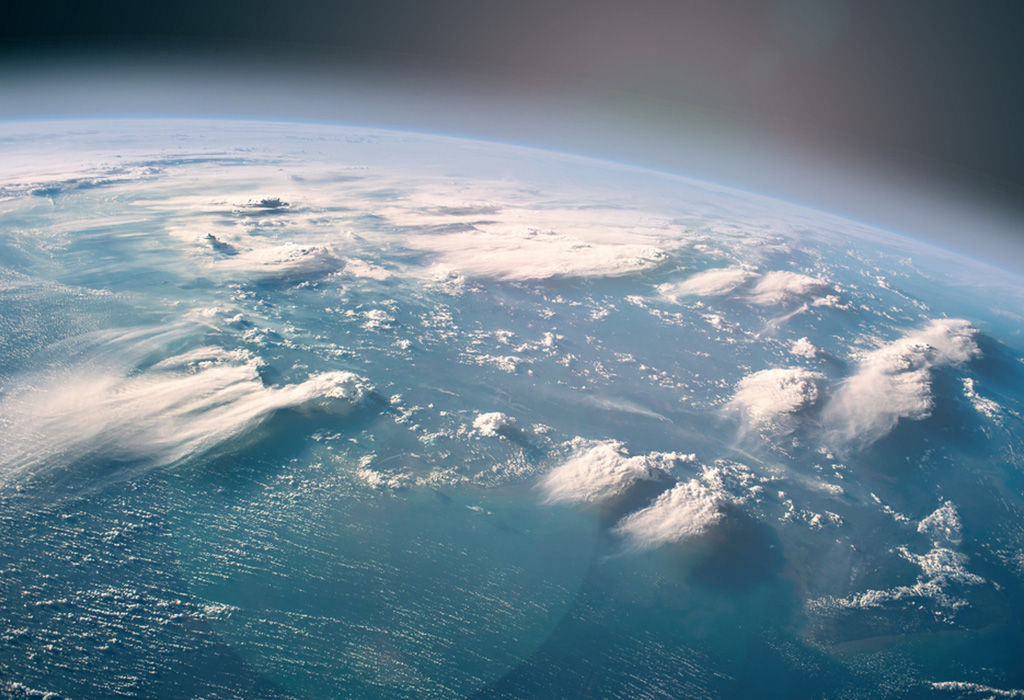In this Article
Children are curious about everything and often ask parents questions that leave them dumbfounded, like “Why do we have eyebrows?” or “Why do dogs sniff everything?” Knowing how things work help children make sense of the world around them.
Imagine your child rushing through the door after school, all aglow because she got praised by her teacher for being able to correctly answer something that was not in any of her textbooks. This is one of the most pleasing advantages; to expose your child to a good amount of general knowledge. After all, there is nothing better than a happy and confident child!
50 Interesting and Fun Science Facts for Children
One could say that, these days, everyone is an expert at everything simply because of Google. Thanks to the internet and smartphones, it is so easy for us to get information, anytime and anywhere. The big question is that when it comes to good scientific knowledge, where does one even begin? Here we have listed for you 50 spellbinding fun science facts about various different topics, to help you get started.
Earth Facts

- The earth is the third planet from the sun and one of the most special in the solar system. It is approximately 149,597,890km away from the sun and is the only planet known to sustain life.
- The earth consists of 70% water, which is only 0.25% of the total mass of the planet. 8% of the earth consists of volcanoes, 11% is fertile land used to grow crops, 10% is covered in ice, and a fifth of the earth’s surface is desert lands.
- The temperature of the earth’s core is around 7,500 Kelvin, which is hotter than the surface of the sun!
- The axis of the earth is tilted at an angle of 23 degrees. This causes us to have four seasons in a year.
- Very strong earthquakes on the ocean floor cause deadly waves known as Tsunamis. Volcanic eruptions in and around the ocean can also cause tsunamis.
Animal Facts
- Dogs have two different air passages, one for breathing and another for smelling. This allows them to store scents in their nose, even while they are exhaling!
- Cats do not have collar bones, and their backbones are very flexible. When a cat walks, its back paws step in almost exactly the same place that its front paws previously were, allowing them to make less noise and leave fewer track marks.
- Killer Whales, also known as Orcas, are not whales at all, and are actually a type of dolphin. They are the largest breed of dolphins in existence.
- Hummingbirds are the only birds in the world that can fly sideways, backwards, up and down, and even hover in mid-air. They can beat their wings up to 200 times per second. They are famous for being the smallest birds in the world.
- Ostriches can run faster than horses, and male ostriches can roar like lions.
Space Facts
- In ancient times, constellations of stars were used to keep track of the calendar and for navigation.
- There are more than 125 billion galaxies in our universe. Our galaxy has about 100-400 billion stars.
- The collapse of a large dying star leads to the formation of a black hole. It has a very strong gravitational force that sucks everything in, including light!
- Our solar system is made up of planets, moons, comets, asteroids, minor planets, dust, and gas. Everything revolves around the sun.
- There are three different types of planets; terrestrial planets (Mercury, Venus, Earth and Mars), they have very solid, rocky surfaces, gas giants (Jupiter, Saturn, Uranus and Neptune), composed mostly of frozen hydrogen and helium, and dwarf planets (Pluto, Ceres and Eris), smaller round planets that orbit the sun.
Technology Facts
- TVs receive and then display broadcasts of images that move so fast, they appear as a smooth motion to the human eye.
- The internet and the World Wide Web is not the same thing. The internet is a network of other smaller networks that link computers together all over the world. The World Wide Web is a collection of linked pages that can be used with the help of the internet and a web browser.
- All electrical devices have fuses in them. Fuses are essentially fire-breakers. If there is a power surge, the fuse will break, preventing any damage or fire.
- Electronic computers were developed around the 1940s and were the size of a large room. Today, computers have gotten so small that they have been embedded into other things like microwaves, toys, cell phones, etc.
- In 1495, Leonardo da Vinci sketched out designs for a humanoid robot. Today, there are many robot prototypes being made.
Engineering Facts

- Out of the Ancient Wonders of the World, the Great Pyramid of Giza, is the oldest and the one that remains mostly intact.
- The way engineers solve practical problems is through mathematical and scientific knowledge. The word Engineer itself comes from a Latin word, which means “cleverness.”
- The Atlantic and Pacific Oceans are joined by the Panama Canal, which was one of the most difficult and dangerous engineering projects of all time.
- The tallest wind turbine has rotor tips measuring over 656 feet above the ground.
- The Delaware Aqueduct, located in New York, is the longest tunnel in the world. It is drilled into a solid rock and reaches 137km in length.
Sports Science Facts
- Aerobic exercises, like jogging, are physical activities that are performed at a moderate level over long periods of time. Anaerobic exercises, like sprinting, are high-intensity exercises over a short duration.
- Today, the fabrics and designs of swimwear glide more smoothly through water than our own human skin.
- As the skates and boards utilised by snowboarders and ice skaters heat up the snow beneath them, they are almost always gliding on thin ice!
- Muscle pulls, and cramps, back strains, tennis elbow, foot aches, sprained ankles, and shin splints are injuries common to sports.
- Most tennis rackets have a string tension of around 50 to 70 pounds, so high tension while playing tennis results in more control and less power, while lower tension produces less control and more power.
Nature Facts
- The world’s largest reef system is found in Queensland, Australia. It is called The Great Barrier Reef.
- Pineapples take 2 years to grow.
- Strawberry is the only fruit whose seed grows on the outside.
- There is an area around the Pacific Ocean where tectonic plates meet, called the Pacific Ring of Fire. It holds around 75% of the volcanoes on Earth.
- A lightning strike can reach up to 54,000 degrees Fahrenheit (30,000 degrees Celsius). This is around six times hotter than the surface of the sun. While a lightning bolt may look huge, its actual size is only as long as that of a ballpoint pen.
Energy Facts

- Around thirty percent of the energy used in buildings is used unnecessarily.
- The combustion of fossil fuels is the cause of over eighty-six percent of the energy used in the US.
- China is the largest consumer of energy in the world today. It is also the largest emitter of carbon dioxide.
- Heat from the sun that is captured and used is called solar energy. It is a great source of energy as it is environment-friendly.
- Wind power functions by harnessing the energy from the wind through the use of windmills, sails etc. It is a clean power source, as the pollution is minimal.
Plant Facts
- Cucumbers are actually a fruit and not a vegetable. They are a part of the melon family.
- There are around 630 different kinds of carnivorous plants. There are types that can survive in the water and others that grow from the soil.
- Touching poison ivy causes an allergic reaction on the skin, as it produces a skin irritant called urushiol.
- Some types of Bamboo can grow by a metre in just one day!
- The bark of the willow tree was the first source of aspirin, the well-known medication used to reduce pain and fever.
Popular Science Facts
- Science kids human body facts tell us that the human eye has the ability to detect and differentiate over 10 million colours.
- Eyebrows play two important roles: they protect against rain, sweat and dirt, while also helping us to express our emotions.
- Elephant facts science for kids says that elephants can sing. They use an ultrasound rumble too low for humans to hear. This “singing” helps to keep the herd together and to find mates.
- Elephants stay pregnant for 22 months; this is the longest period of gestation in any land mammal.
- Science kid’s dinosaur facts say scientists have discovered that the theropod group of dinosaurs, which includes the T-Rex, are the ancestors of birds.
Always remember, scientific knowledge doesn’t only play an important role for children, but for parents as well. It will enable you to answer your child with confidence, even if the question is related to something you usually wouldn’t know. Learning scientific facts about the world is a great way to bond with your child as there are many fun and exciting ways to do it, like going to the science centre in your hometown or even just reading through some fun facts together.
How to Get Your Kid to Love Science?
Young kids are generally fascinated by all things science, because it gives them an explanation for why things happen the way they do, in the world around them. However, as they grow older, with science becoming a subject in school and more theorised, kids tend to lose interest. Here are some ways you can retain your kid’s love for science, as he/she grows up.
1.Quality of Games
Buy them interactive games that involve puzzles, experimentents, etc., which are educational, yet fun and entertaining.
2. Trip to Nature
Go on a short day or weekend trip amidst nature, exposing them to the fascinating elements it holds. You can point out interesting species of animals and flowers, and watch a beautiful sunrise and sunset.
3. Documentaries Galore
Documentaries are a treasure trove of information, moulded to interest anyone of any age. Whether your child is fascinated with nature, the solar system, or the animal kingdom, you’ll have many options to choose from.
4. Kitchen Science
There are a number of experiments you can conduct in your own kitchen, that are sure to hook your children, right from the get go. The plus point, adults love them just as much!
5. Visit a Science Centre
This may sound boring to many, but on the contrary, science centres can be quite fun, with numerous demonstrations and experiments.








